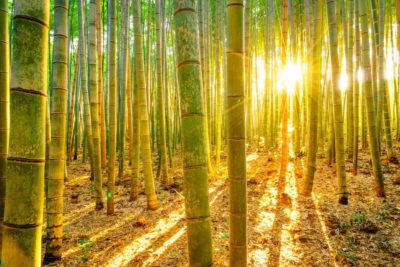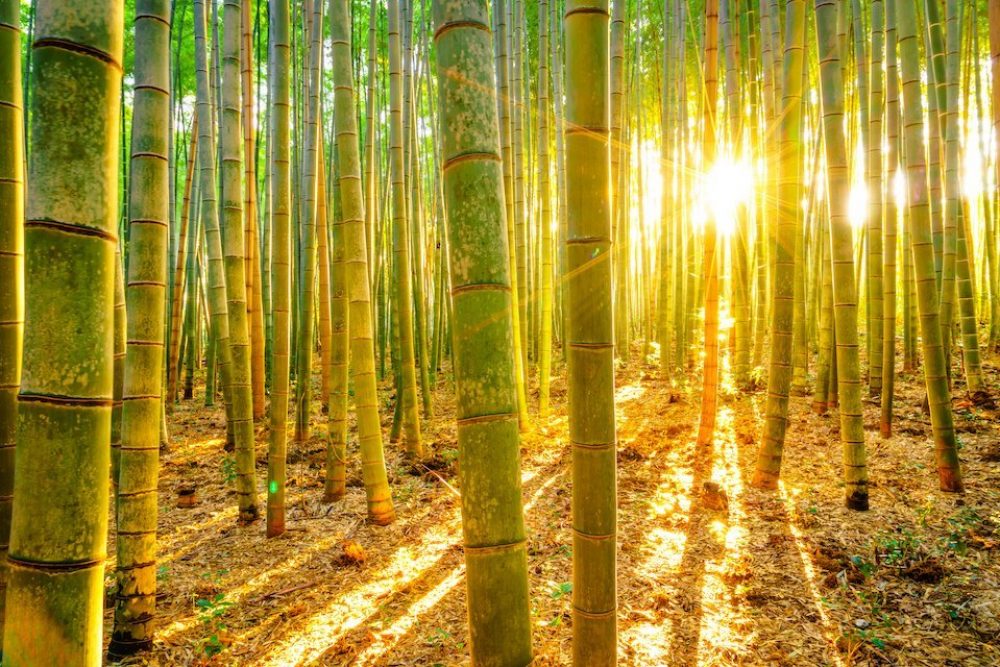Composite materials using bamboos and plastics.


Date of publication 11 May 2020
Authors Yeh, Chin-Hao; Yang, Teng-Chun.
Sources Utilization of Waste Bamboo Fibers in Thermoplastic Composites: Influence of the Chemical Composition and Thermal Decomposition Behavior (2020) Polymers : 12 (DocId: 3)
Abstract
Abstract: In this study, four types of waste bamboo fibers (BFs), Makino bamboo (Phyllostachys makinoi), Moso bamboo (Phyllostachys pubescens), Ma bamboo (Dendrocalamus latiflorus), and Thorny bamboo (Bambusa stenostachya), were used as reinforcements and incorporated into polypropylene (PP) to manufacture bamboo–PP composites (BPCs). To investigate the effects of the fibers from these bamboo species on the properties of the BPCs, their chemical compositions were evaluated, and their thermal decomposition kinetics were analyzed. Bamboo waste is an important biomass resulting from the maintenance of green spaces and forests in Asia. The bamboo fibres used in this study contain mainly cellulose, in different forms, lignin and various other constituents grouped together under the term “extractive content”. When cellulose and extractive content are high, the fibres degrade easily at low temperatures. Since PP is a thermoplastic, it must be melted at high temperatures to prepare the composite. The added fibres must therefore resist this treatment. Results indicated that the Makino BF was the most thermally stable. In addition, it has a high crystallinity and a high lignin content, which gives it better mechanical properties compared to other bamboos, especially for flexural strength. On the other hand, thorny bamboo has a higher water content and affinity due to its composition rich in cellulose, which induces thermal degradation at low temperatures. The SeaCleaners’ View : Plastics are virtually all composite materials Vegetable fibres in plastic materials The mechanical properties of the material are reinforced by the bamboo fibres Biosourced materials are not necessarily biodegradable Bamboo can also provide an ecosystem service
They contain several components: the polymer, additives and fillers. The latter are used to add volume by being cheaper than the polymer, but they can also help to improve the technical properties of the materials. The vast majority of these components are of petrochemical origin, but the availability of vegetable waste from agriculture has opened up opportunities to use even cheaper fillers. This has opened the door to naturally occurring substances in plastics. They are now the subject of many studies because of their advantage in terms of carbon balance and possibly biodegradability.
The bamboo waste solution presented in this article, has the advantage of using a biomass available in quantity because it results from a recurrent agricultural activity of cleaning green spaces. Until now, it has only been valorized in energy production by incineration or not valorized by landfill. This material contains two families of main constituents: hydrophilic molecules, such as celluloses for example, and hydrophobic molecules, such as lignin, which is also present in wood fibres. For integration with thermoplastics that do not tolerate high water content in their manufacturing process, it is preferable to have low celluloses concentrations and higher lignin concentrations. This is what the authors of this study have shown through different types of bamboos integrated with PP.
Bamboo is widely used in Asia to build scaffolding because it is both flexible and very mechanically strong. These properties are given by the particular composition of the fibres that constitute it. Once incorporated with thermoplastics, some of these properties are retained, giving the composite material an advantage beyond the simple addition of a filler in the composition. In this study the composite contains 50% bamboo and 50% PP. At this level, the question arises whether this new material is a bamboo composite with PP as a binder or a plastic composite with bamboo?
This aspect is not addressed in this article. It is unlikely that this bamboo/PP composite is easily degradable in the environment because lignin is quite resistant to degradation. It is the part of the wood that resists the longest. Similarly, PP is not readily degradable. However, fragmentation will probably start in the bamboo fibres and the fragments of plant fibres present less risk to the environment than those of PP.
They are easy to cultivate, have a very high surface productivity and a naturally high growth rate without the need for “high-tech” agriculture. ». It is therefore a biomass that has the potential to be sustainable because it has a low impact on agricultural land dedicated to food and a very rapid renewal rate. Being a plant, its main source of energy is photosynthesis with nutritive salt requirements such as nitrates and phosphates. Its cultivation could therefore integrate lagoon areas in tertiary treatment of wastewater treatment plants. Indeed, the excess of these nutritive salts in the water of the water tables, rivers and coastal areas induces massive proliferation of green algae or toxic plankton. Sewage treatment plants are one of the sources of this pollution.
Ecology is essentially “circular” because it is impossible to make chemical constituents disappear, we can simply transform or transfer them from one compartment to another of the global ecosystem of which we are all part. If bamboos have a technical advantage in products, let’s use them to help solve existing pollution
Comments area